
Believe it or not, you need cholesterol. Cholesterol is a vital component in the production of vitamin D, testosterone, estrogen and bile acids. To maintain these healthy human processes, your body naturally makes about 80% of the cholesterol it needs. The other 20% comes from the food you eat. However, like anything else, too much cholesterol can be bad.
If you’re at all concerned about cholesterol levels, adding certain foods to your daily diet can reduce your risk of serious health conditions, like heart disease and stroke.
But first, you should understand the basics of cholesterol and its different types.
LDL versus HDL cholesterol

Cholesterol is a waxy yellow fat that cannot move through blood by itself. It has to be packaged inside protein molecules, which makes it a “lipoprotein.” There are five main types of lipoproteins, and each one carries a varying amount of either cholesterol, phospholipids or triglycerides. You’re probably most familiar with low-density lipoprotein (LDL) and high-density lipoprotein (HDL).
Despite their name, LDL particles are very dense and carry mostly cholesterol. High levels of LDL in your blood can lead to atherosclerosis, or clogged arteries. Hence, why LDL is often called the “bad cholesterol.”
HDL, on the other hand, is known as the “good cholesterol” because these lipoproteins remove some cholesterol from your arterial walls and from blood circulation. The HDL particles work as carriers, taking cholesterol back to the liver where it gets excreted through bile.
Unfortunately, there are no specific foods or supplements that are low in LDL or high in HDL. To manage your cholesterol levels, you need a substance that either inhibits absorption of dietary cholesterol or increases the rate at which your body clears out cholesterol. Medications are, of course, the most effective options. But the foods you eat can also make a difference.
The following foods are some of the ones believed to be most beneficial for managing cholesterol.
Beans
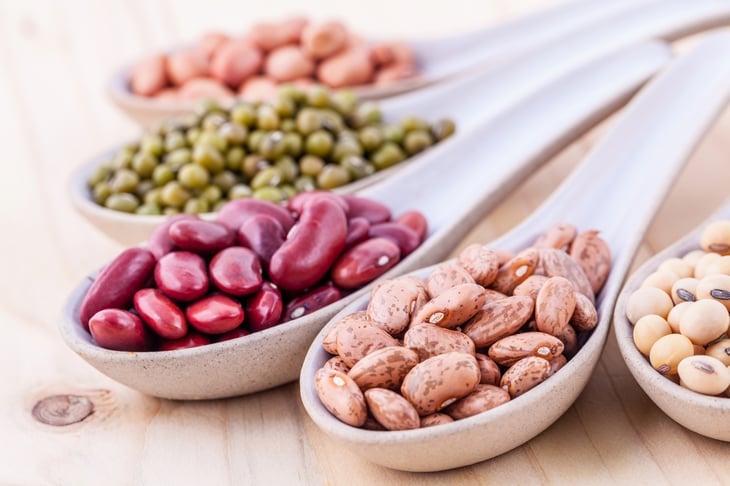
Jack (of beanstalk fame) isn’t the only person with magic beans. Anyone who regularly eats black beans, kidney beans, soybeans, pinto beans, garbanzo beans, navy beans, white beans or lima beans will benefit from the magic of viscous fiber.
Viscous fiber is a type of soluble fiber that binds to cholesterol in your gut and helps shuttle it out of the body through waste. Viscous fiber is so effective that consuming just 7.5 grams per day has been shown to reduce LDL cholesterol by up to 10%.
Most beans should be cooked before eating. Cooking helps break down their complex carbohydrates so they’re easier to digest. If you like dried kidney beans, make sure they are completely cooked before eating or you run the risk of food poisoning. For less fuss and fret, pick canned beans, which are pre-cooked.
Berries
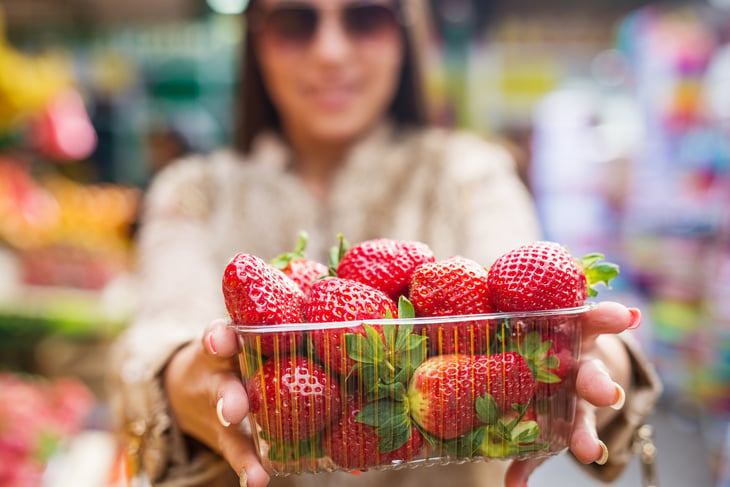
There are so many reasons to love berries. They’re naturally sweet, bite-sized and chock-full of key nutrients – fiber being one of them. One cup of blackberries, raspberries or strawberries supplies about 1 gram of viscous fiber.
When shopping for berries, don’t forget about the freezer section. Frozen berries are picked at their peak ripeness during the summer months before being flash frozen. The result? Frozen berries tend to have more nutrients than fresh pints, especially during the off seasons. Frozen berries also tend to be the least costly choice.
Broccoli

No diet is complete without a healthy mix of vegetables. Broccoli, however, is especially beneficial for a heart-healthy diet because it’s high in soluble fiber. In one-half cup of broccoli, you get 1.2 grams of soluble fiber. The only vegetables with more soluble fiber are Brussels sprouts, turnips and sweet potatoes. While these are great options, too, broccoli is a more popular plant and incredibly versatile.
Saute, steam, roast or air-fry broccoli florets, and then add them to your favorite recipes. For instance, roasted broccoli goes well with chicken Alfredo or works as a healthy pizza topping. You can even win over picky eaters by baking up a batch of broccoli cheese bites.
Flaxseeds
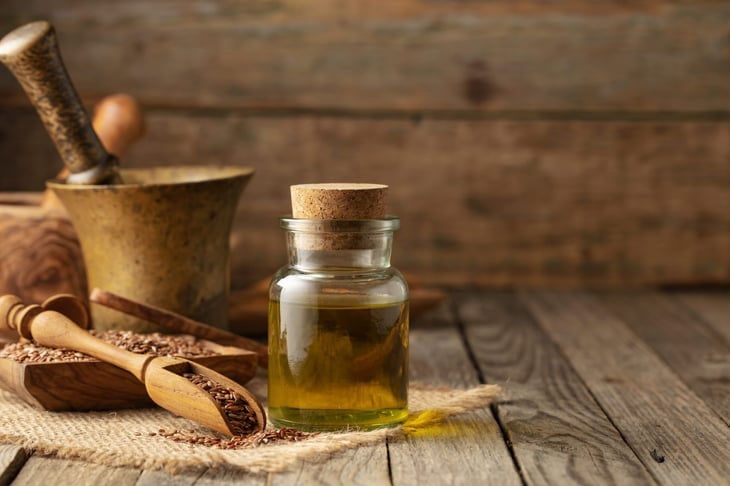
Flaxseeds contain a group of plant-derived compounds called phytosterols. When consumed, phytosterols compete with cholesterol in the intestines, thereby reducing the amount of cholesterol that gets absorbed.
Flaxseeds are highly concentrated with phytosterols, providing 195 milligrams per 100 grams of flaxseed. They are also rich in polyunsaturated fats, protein and fiber, which is why flaxseeds are a healthy way to fill a growling stomach.
Note: Ground flaxseed and flaxseed oil are equally heart-healthy.
Oats
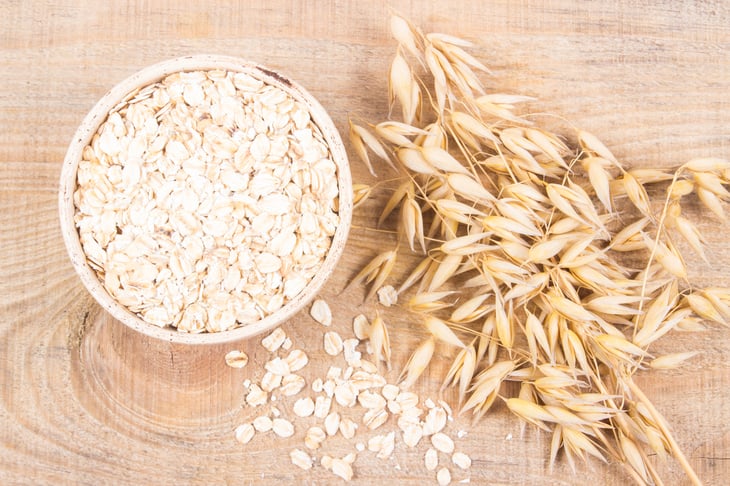
In 1997, the Food and Drug Administration approved the use of an oat beta-glucan health claim, which allows food manufacturers to say their oat products have cholesterol-lowering effects. The approved health claim is based on extensive scientific studies.
More recent research quantified these effects, showing that three grams of oat beta-glucan reduces LDL by 0.25 mmol/L (millimoles per liter) and reduces total cholesterol by 0.30 mmol/L. The impact was most significant in individuals with higher baseline LDL levels or with diabetes.
If you’re already eating oatmeal, pump up the nutritional value by mixing in wheat germ or ground flaxseed and then topping with your favorite berries. You’ll get phytosterols and soluble fiber in every single bite.
Peanuts
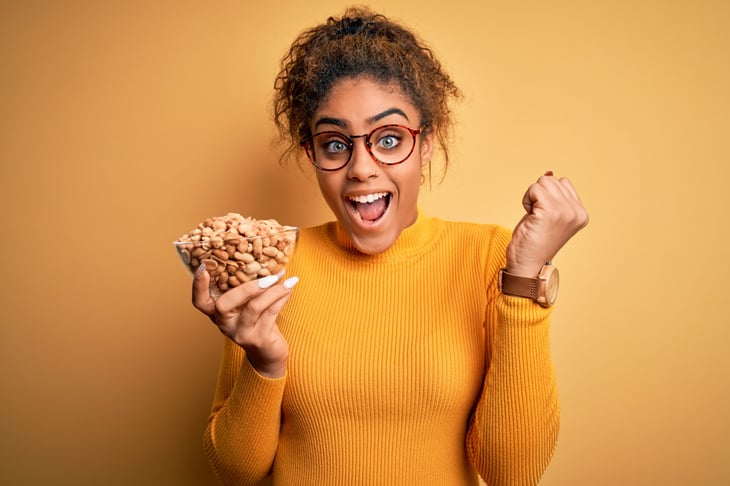
While all nuts are beneficial, peanuts have one of the highest concentrations of phytosterols, providing 220 milligrams of phytosterols per 100 grams of peanuts (about 3.5 ounces). Researchers say you need at least 2 grams of phytosterols per day if you want to lower LDL cholesterol.
Of course, you’ll reach these recommendations from eating a variety of foods, but a handful of peanuts helps get you there. Allergic to peanuts? No problem. Pistachios and almonds are the next best choices.
Sweet potatoes
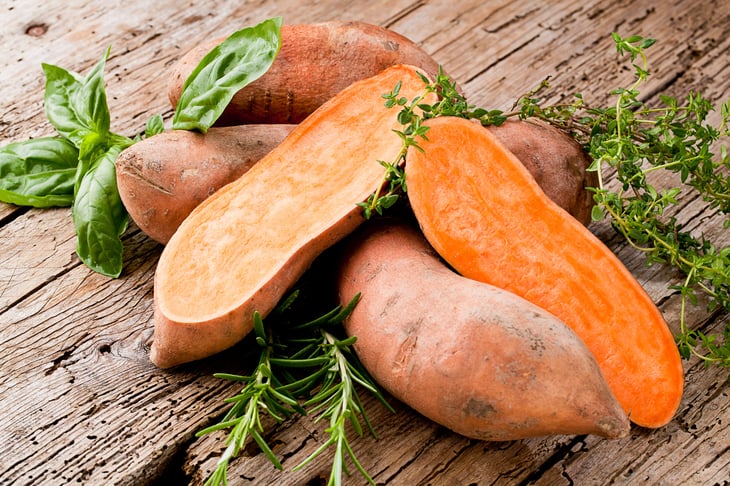
Sweet potatoes are considered a starchy vegetable. Starchy means they are high in carbohydrates which is why someone with diabetes may need to watch their portions of sweet potatoes. For those who don’t have elevated blood sugar, adding sweet potatoes to your plate can help you hit those daily viscous fiber goals.
To be clear, choosing sweet potato fries instead of regular french fries isn’t the healthy swap you’d like it to be. The process of frying adds saturated fat, which can raise LDL cholesterol. Instead, bake or roast fresh sweet potatoes and serve with a drizzle of olive oil and a sprinkle of cinnamon.





Add a Comment
Our Policy: We welcome relevant and respectful comments in order to foster healthy and informative discussions. All other comments may be removed. Comments with links are automatically held for moderation.